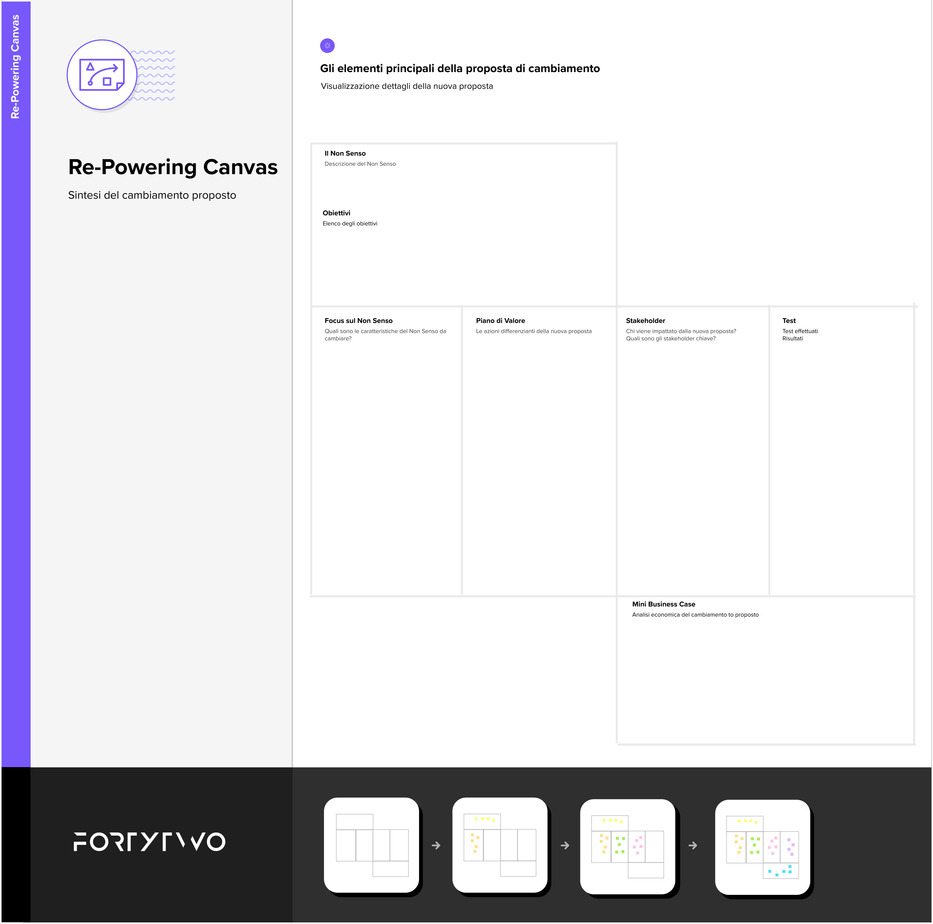How to Stop Worrying about Quiet Quitting and Turn it into an Opportunity for Growth and Change
This phenomenon represents a risk for the organization, but also an opportunity for growth and change. It could be you, the person able to seize this opportunity.
Concern about the growth of the Quiet Quitting phenomenon is justified because it is growing in Italy. Gallup research on the state of work in 2023 indicates that, in the world, the majority of workers (59%) are in this state. Italy ranks second to last in Europe (37th out of 40) for employee engagement (only 5% feel engagement at work), in Gallup's research.
Even more than the minimal contribution to organizational productivity and a hindrance to change, it poses a risk because it can spread to other employees and demoralize the organization, being contagious.
Published on

Quiet Quitting entered the Human Resources vocabulary at the end of the pandemic when workers returned to the office and something fundamental broke. People started questioning the meaning of life, and of their work, and began approaching their professional commitments with resignation and emotional detachment, avoiding engaging beyond the minimum.
But in some organizations, this attitude was the norm long before the pandemic.
What can you do?
Quiet Quitting is a new term for an old phenomenon. In the Anglo-Saxon world, the term "Italian Strike" refers to a work slowdown, a form of protest where employees strictly adhere to the rules and tasks explicitly stated in their contracts and refuse to do anything more.
What can you do to turn this risk into an opportunity for growth and change?
The first thing you can do is to acknowledge it and avoid judging, or falling into stereotypes. It's a phenomenon rooted in cultural change, and the responsibility to change and turn it into an opportunity lies with both the company and the employees. Assigning Quiet Quitting to the younger generations ia a harmful simplification, it should be clear that it also affects experienced employees who have lost their attachment to work, and others struggling to find satisfaction in the workplace.
In its research, Gallup suggests that a solution to the problem can be achieved by changing the leadership model, and bringing in individuals who are capable of encouraging and inspiring.
In my opinion, this approach is correct, but I believe it's a challenging path to pursue. In my experience, many managers believe that subordinates should only know the bare minimum required to complete their tasks and nothing more. Perhaps they fear their decisions might be questioned, and their authority could be undermined. This clearly is antithetical to employee engagement.
You can download Gallup's research here: State of the Global Workplace 2023

Bottom-Up Approach
What we did, with FORTYTWO, and what you can do as well, is to focus on the employees, and our experience in changing organizations from the bottom up. We learned how to change the behavior of individual people, encouraging the organization to change.
It's a wonderful experience: seeing the change in posture and expression, hearing enthusiastic discussions about projects, and witnessing the shift in the atmosphere.
The approach we adopted integrates our experience in bottom-up innovation with lessons from two important books: Drive by Daniel Pink and The Ministry of Common Sense by Martin Lindstrom. I recommend reading them, if you also want to counter the phenomenon of Quiet Quitting.

The Re-Powering Project
We start by engaging human resources to identify individuals who are no longer engaged, and understand their situation. You will need to take this step with care because you don't want people to feel judged, but rather understood. We also make sure to have the authority to have the time of these individuals available: between 5% and 10%. We don't want those participating in the project to have issues with their manager because they are dedicating time to activities that are not part of their responsibilities. This is precisely what we want to happen, given the definition of Quiet Quitting.
Now, the challenge you will have to solve is to engage and convince the people you have chosen to participate in the project. Take a moment to think. What approach would you adopt? What arguments would you use?
Engagement
We create customized communication for each individual that includes a promise, introduces the project, and asks them to commit only to having a confidential 30-minute conversation, and then decide whether to participate in the project or not.
Have you noticed that we are minimizing the use of Coercion and instead offering Autonomy and Control! Autonomy and Control are two essential factors for reclaiming one's work and generating engagement. Paradoxically, providing the possibility to choose not to participate increases the likelihood of acceptance, and asking for only a small initial commitment enhances motivation.
Now, it's possible to start the project on the right foot.
Facing the problems

This is the first step we take in the Re-Powering project. We invite all participants to create a list of all the issues they encounter at work, that bother them, that represent an obstacle. These are problems that the participants care about, problems that directly involve them, and that they would gladly do without. Participants are willing to make an extra effort to get rid of them. It's a primary step towards improving engagement.
This is a highly critical phase because it's necessary to gain the participants' trust, who are usually skeptical about projects and corporate initiatives they are involved in. Their perception of these events is that, even though they contribute, it's not taken seriously, and things in the company won't change anyway. It must be clear that they individually have the mandate to solve the problem they have chosen and that the company is giving them a serious opportunity that will have a follow-up.
In this phase, we assist the participants in choosing the problem to address, ensuring that they have a high probability of success.
Designing a Solution
Now that each participant has identified a problem to solve, we can move on to the next phase. In this stage, they analyze the problem, identify its characteristics, and try to understand why it arises. In most cases, the problem exists because the organization has not adapted to the changes that have occurred, and procedures, processes, and customs that no longer make sense are still in place. You must ensure that there are no insurmountable obstacles to change that would cause attempts to overcome the problem to fail. Once this is verified, the solution to the problem can be designed. Each person freely chooses the solution they consider most appropriate and, if desired, can seek opinions from other project participants.
This phase generates a lot of enthusiasm as participants take control of solving a problem that concerns them personally. They discover that they can apply their specific job-related skills in a context that goes beyond their routine, and they become passionate about the project. In fact, they themselves have chosen the problem to solve, understood its causes, and created a solution.
Understanding the Impact on the Organization
Like all changes within an organization, these solutions will also have an impact on their colleagues, managers, other departments, clients, suppliers, and more. That's why we analyze these impacts, aiming to anticipate any problems that might arise. This effort helps us understand who might be supportive of the changes introduced by the solution and who might not. It's the right time to modify the solution with the goal of avoiding insurmountable resistance that could derail the proposed solution.
In addition to increasing the likelihood of the solution's success, this phase allows participants to experience first-hand why it's so challenging to implement changes in a company, even when these changes seem beneficial at first glance.
This is a return to reality for the participants, and they should be encouraged and reassured to continue their engagement in the project.
Verifying Economic Sustainability
Now that we have identified a problem, created a solution, understood the impacts, and mitigated resistance to change, we address the topic that will be used to convince the final decision-makers: the cost of the solution and the economic benefits it will bring. We assist each participant in developing a Business Case that compares costs and revenues, establishing a breakeven point for the proposed solution, which we will submit to the Management Control for verification and validation.
During this phase, participants gain a lot of confidence. Typically, the solutions they have created are highly advantageous for the company, as most of the problems are related to unnecessary time losses, error-generating situations, redundant steps and approvals, and inefficient work tools.
This phase is exciting because individuals realize that their solution will have a significant impact on the company, and they become proud of the work they have contributed to the project. They also understand that with a strong economic argument, it will be challenging for the company to ignore their solution and not implement it.

Preparing a Persuasive Presentation
We're almost at the end, and all that's left is to put the icing on the cake. Prepare a persuasive presentation that can lead the decision-makers to adopt the solution and approve its implementation. When done well, this phase also achieves another outcome: it changes how the organization views the person proposing the change. If previously the person's supervisors and colleagues considered them unenthusiastic and argumentative, now they see someone who, aware of a problem, takes ownership of it and proposes a creative and advantageous solution for the company. This also changes the self-image of that person.
Meeting the Decision-Makers
This is the phase where the change becomes a reality. We work with human resources and ensure that we have the authorization from the management to have the time and attention of the individuals who have the power to decide and oversee the implementation of the proposed solution.
In some cases, we come to this meeting with a solution that has already been implemented because it was so advantageous, reasonable, and cost-effective that the involved parties took action instantly, and the meeting is merely a recap of what has transpired. In cases where the commitment is more significant, the approval of the decision-makers will be required to allocate the necessary resources. In any case, proposals shouldn't reach this phase incomplete, with limited economic benefit, or excessively demanding.
The Final Result
Thanks to this pragmatic approach, we are able to help between 80% and 90% of individuals regain engagement in their work, confidence in their ability to bring about change, and trust in their own capabilities. Participants learn, through practical application, how they can effect positive changes in their work environment, gaining a greater sense of control.
Conclusions
Too many individuals have distanced themselves and become disengaged from their work. Even if they do it to avoid suffering, this strategy is counterproductive as it eliminates the possibility of finding satisfaction and fulfillment in their work. It drains a significant part of life of its meaning.
In organizations experiencing low employee engagement, productivity suffers, and changes are resisted.
This is a situation where everyone loses.
As you have read, it's possible to do something to regain engagement: offer a genuine opportunity to regain control and exercise autonomy.
By following the example you've read in this article, you can succeed in reengaging individuals who had disengaged. Following the example, you can effect changes and generate economic benefits while recovering individuals, for both their well-being and the company's benefit.
You can organize a structured project like the one you've read about, or you can ask us to do it for you. We can help you transform a problem into an opportunity for growth and change.
Good luck with your work!
 Hugowiz
Hugowiz